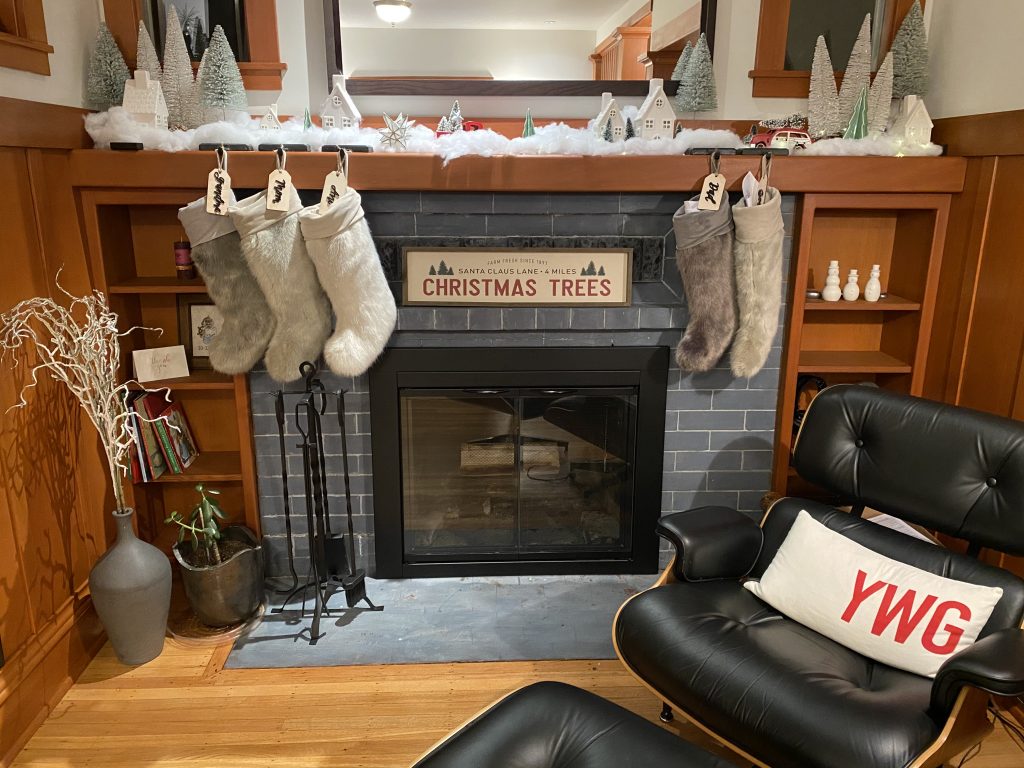Figuring out our wood burning fireplace

Wood burning fireplaces are magical – they crackle, smell of winter and are transfixing. Or at least, that’s how I imagine a wood burning fireplace to be. Truth be told, I haven’t experienced one since growing up (though I have lived in homes with wood burning stoves which upon reflection are way easier!).
So while living, temporarily, in one of our rental properties named “Pink House” over the winter while we remodel our floating home I was excited to put the wood burning fireplace in Pink House to work.

The seller warned me that we should put a smoke guard in but not knowing what that was, I built a fire just to see what was going on. Smoke filled the home minutes later and left our home smelling like a campfire for weeks. (The day after the fire I opened all the doors, windows and skylights then took my daughters to the park only to have it start down pouring. Needless to say we didn’t even get out of the car at the park and fortunately came home to find the rain inflicted little water damage but the home still smelled of smoke and smelled of smoke weeks later.)
Not to be deterred I hired a chimney sweep and learned that our chimney is mostly fine but that indeed, we should seal up the ash box (didn’t realize we had one!), get a smoke guard and remove some bricks at the top of the firebox to improve the draft. So he hammered out some bricks and installed a smoke guard. That night I built a roaring fire (but not too roaring since we have an unlined chimney). It was a success in so much that the home didn’t fill with smoke but the campfire smell lingered for weeks afterward.

Sitting by the fireplace one evening I noticed just how damn cold it was. After sticking my head up it, it was clear the damper doesn’t offer a tight seal and that our fireplace was a major cold sink, likely costing us hundreds of dollars in heating bills. More internet research ensued and I promptly ripped out the smoke guard (anyone need a barely used one?) and installed glass doors. The living room is definitely less drafty! But more importantly the smoke smell is gone. My theory is that the loose damper resulted in cold air descending the chimney and blowing across the ashes in the firebox, blowing a smokey smell into the home. That smell is now blocked by the glass doors. I also theorize that based on the holes in the bricks surrounding the fireplace that there used to be doors installed but at some point they were removed (my guess is they were gold and installed in the 80s.)
I also learned that how I was building a fire was totally wrong. I’m now a firm believer in the Chimney Safety Institute of American top-down method.
Anyhow, about a thousand dollars later, it seems as though we can likely enjoy our wood burning fireplace as long as I’m willing to drive to South Park for wood. That is also as long as there isn’t an earthquake since I didn’t opt to anchor the chimney to the house (~$2,000). I also passed on lining the chimney (~$7,500).

Needless to say, in the remodel of our floating home we’re putting in a gas fireplace; Alexa, turn on the fire!
Update: after a few fires over Christmas we’re still having smell issues! I’m going to try caulking the glass door insert. And if that doesn’t do it, investigate devices like a Chimney Sweep Flueblocker.
Update 2: I caulked the fire glass door insert with fireplace insert insulation but still our home smells like a camp fire days after a fire. I’ve ordered a Chimney Sweep Flueblocker. Someone also suggested getting an air purifier to put beside the fireplace, but they’re spendy!
